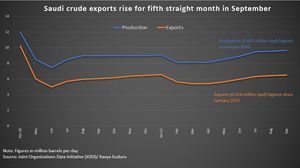Compensation and salary trends across various professions reveal significant disparities and impacts on personal finance. From leading airline executives to dental specialists, the salaries can vary widely based on experience, location, and market dynamics.
For example, the Hong Kong airline industry is represented by Cathay Pacific Airways (CX), one of Asia's oldest operational airlines, which celebrates its 80th anniversary next year. CEO Ronald Lam, who has been with the airline for nearly three decades, has seen his compensation rise to HK$10.45 million (approximately US$1.3 million) for the 2023-24 period—a 32% increase compared to the previous year. According to reports, Lam's salary still pales when compared to his competitor, Goh Choon Phong from Singapore Airlines, who secured about US$6 million during the same timeframe.
It’s noteworthy how Cathay Pacific has transformed under Lam’s leadership post-COVID, as the airline aims to restore travel volumes to pre-pandemic levels by 2025. Future plans include expansion to 100 destinations and commitments to improving service with new business class offerings on their aircraft.
Meanwhile, the dental profession is also seeing growth. The Bureau of Labor Statistics reports the average annual salary for dentists at $170,910, with general dentists earning around $191,750 and specialists garnering upwards of $300,000. Factors like geographical location and years of experience significantly influence these earnings. For example, average salaries for dentists can vary from $165,760 in Illinois to $260,380 in Vermont.
For specialists, such as oral surgeons and orthodontists, the earning potential rises even higher. With median annual salaries for oral and maxillofacial surgeons reaching around $239,200 and dental anesthesiologists topping out at $393,215, the financial rewards for additional training are evident.
But what about the debt incurred to reach these positions? The American Dental Education Association notes new dental school graduates are leaving with substantial debt averages of $312,700, which can be burdensome, especially compared to other medical salaries.
This brings us to employee financial wellness and the rise of Early Wage Access (EWA) programs, which are touted as beneficial to workers needing quick access to their earnings. EWA allows employees to receive funds they’ve already earned before the official payday. Yet, there are concerns about the long-term financial behaviors associated with EWA. Critics argue it could lead to overspending and reliance on advances, promoting poor financial management rather than addressing the root causes of employee stress related to financial health.
The financial ecosystem for employees is complex, and the utilization of EWA must be managed responsibly. While it may provide short-term relief, companies must also invest in comprehensive financial education to help employees manage their resources for the long haul. They can also explore offering traditional employee benefits like student loan repayment assistance, which could alleviate some of the financial pressure on those with large debts.
The stakes continue to rise as companies adapt to these changing trends. With Cathay Pacific investing heavily in fleet upgrades and the dental industry continuing to expand its salary potential, both sectors reveal much about current salary trends. How organizations choose to navigate compensation structures and financial wellness programs will undoubtedly shape the workforce of the future.
Conclusively, recognizing the nuances of salary disparities and their future projections is key for both employers and employees. Companies need to leverage competitive salaries and beneficial programs wisely to attract and retain talent, fostering environments where financial literacy and employee satisfaction go hand-in-hand.



